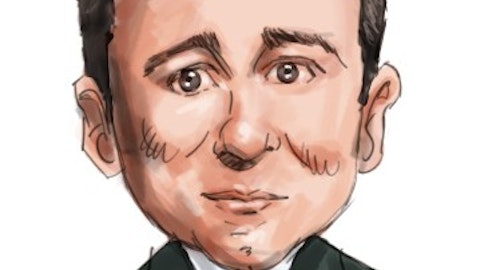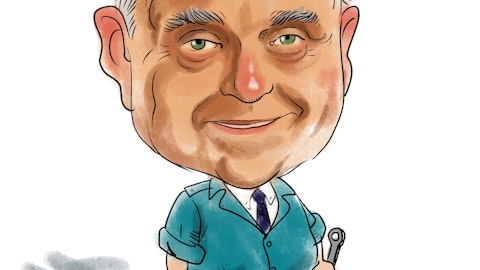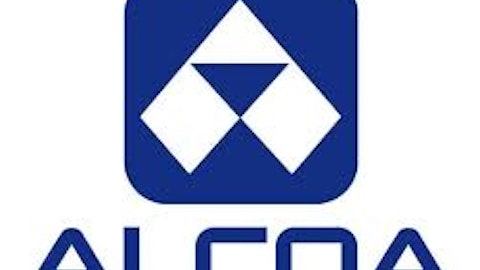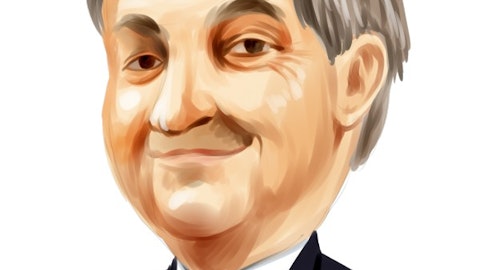Stocks bought by insiders tend to outperform the market, and the effect is particularly strong when multiple insiders are buying (learn more about studies on insider trading). We think that this is because insider purchases signal that these individuals are very confident in the stock’s prospects- so confident that they buy when economic theory suggests they should be trying to sell and therefore reduce their exposure to any particular company. It makes sense that when more than one insider comes to this conclusion that confidence has to be particularly high- though of course even in this case it’s important to study the company to make sure that it might actually be a good value. Here are four healthcare stocks that multiple insiders have bought shares of within the last three months:
Synageva Biopharma Corp (NASDAQ:GEVA), a development stage pharmaceutical company, has been one such target of insider purchases in the healthcare sector. Synageva is developing a drug designed to treat lysosomal acid lipase deficiency as well as other products aimed at rare diseases and medical conditions. As a development stage company, it is currently unprofitable and its net losses are actually expected to grow in 2013 as well. That makes it a bit speculative of an investment for us, particularly as we have no understanding of Synageva’s products. Baker Brothers Advisors, a healthcare focused fund which is managed by Felix and Julian Baker, reported a position of 8.4 million shares at the end of Q3 2012. This made it one of the five largest holdings in Baker Brothers’ portfolio (find more of its favorite stocks).
Another healthcare stock that multiple insiders have been buying is Valeant Pharmaceuticals Intl Inc (NYSE:VRX). The $20 billion market cap pharmaceutical company was one of the top picks in the portfolio of Jeffrey Ubben’s ValueAct Capital (see more stocks Ubben likes) and Tiger Cub Andreas Halvorsen’s Viking Global reported a large position as well (research more stocks Halvorsen owns). While Valeant’s revenue numbers have been looking good, earnings have been down. Value investors might be more comfortable looking at Teva Pharmaceutical Industries Ltd (NYSE:TEVA), which carries trailing and 2013 P/E multiples of 15 and 7 respectively. Still, the optimism from two company officers and one member of Valeant’s Board of Directors might make the company worth at least some investigation into whether it can stabilize and grow its business.
Two medical device companies completed our list:
Multiple insiders have bought shares of Cyberonics, Inc. (NASDAQ:CYBX), a $1.2 billion market cap medical device company. Its primary product, the VNS Therapy System, is used for nerve stimulation. Cyberonics reported double-digit growth rates in revenue and earnings in its most recent fiscal quarter (which ended in October) compared to the same period in the previous fiscal year, including a 50% rise on the bottom line. The stock trades at 30 times trailing earnings, so some degree of future growth is already priced in at the current valuation. Renaissance Technologies, whose founder Jim Simons is now a billionaire, increased its stake in Cyberonics during the third quarter of 2012 and closed September with 1.6 million shares in its portfolio (check out Renaissance’s stock picks). Palo Alto Investors is another major shareholder in the company.
Several company officers at Haemonetics Corporation (NYSE:HAE), a medical device company whose products are used to help manage the blood donation process, bought small quantities of shares since the beginning of November. At a market capitalization of $2.3 billion, the stock is valued at 43 times its trailing earnings, a figure that we would normally consider high. While the company has been experiencing revenue growth, in the second quarter of its fiscal year (the quarter ended in September), earnings were down sharply. As a result we think that we would avoid the stock; even with sell-side analysts expecting a strong recovery over the next several quarters, the forward P/E (for the fiscal year ending in March 2014) is still high at 22.
Disclosure: I own no shares of any stocks mentioned in this article.






